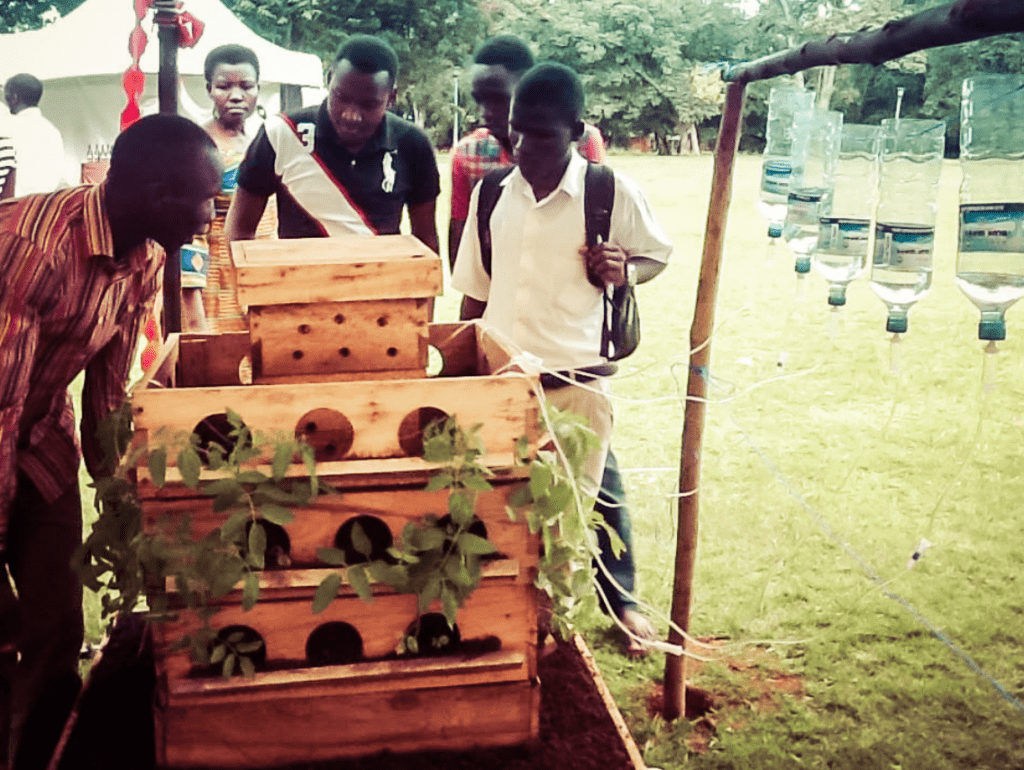What is Micro-Gardening?
Micro-gardening is the practice of growing food in containers in order to maintain energy and space efficiency. This gardening technique is taking urban city settings by storm due to its convenience and ability to thrive in confined spaces such as balconies and small lawns.
Now it is easier than ever to have access to fresh food in the city, without having to leave the comfort of your own home.

With over 55% of the world’s population living in cities, micro gardening could be the most affordable and efficient way of culminating and integrating fresh foods into our lifestyle.
Micro-gardening is also highly productive, with some gardens growing up to 200 plants. For example, the IDEAS For Uganda project was able to install some of this size in the more urban areas of Uganda.
IDEAS For Uganda Project
In 2015, with aid from The Solutions Fund, the IDEAS For Uganda branch developed a program called Vertical Micro-Gardening (VMG). The program was initiated to address food security issues in developing cities and bring light to a new way of growing food. The IDEAS For Uganda branch pilot program installed:
- 2 VMG units at the IDEAS Innovation Home in Mengo, Kampala
- 32 VMG units in households in the surrounding area.

This pilot system went on to receive international recognition. The system was able to use less soil and space, use the compostable waste from local garbage collection centers, and transform a 9 sq ft of ground area to 36 sq ft of vertical growing space. With the project’s expansion in 2017, the IDEAS For Uganda branch was able to make many impactful changes which included:
- 4 school gardens established
- An educational demo site at the Multitech Business School
- Micro Gardening courses
- Free study tours for the local community
- 200+ students trained per year
- Agroecological study sessions on-site
- 250+ plastic bottles recycled
- 200+ plants grown in each unit

According to the World Food Programme, “nearly half of all Ugandans consume less calories than they need every day. One in three school children have no food to eat during the school day.”
With 20% of Ugandans living below the poverty line, programs such as vertical micro gardening can provide easier and affordable access to fresh food. By helping to implement these tactics into their everyday lives, we can improved living conditions and feed more of the population.
How can you help?
Here are some resources to help kickstart your own micro-garden, in order to have access to fresh fruits, vegetables and a colorful view from your patio/balcony:
- https://themicrogardener.com/learn/design/
- https://www.goalglobal.org/stories/post/sustainable-gardening-micro-gardening
- https://www.gardenista.com/posts/66-square-feet/
- https://mysolluna.com/blog/2014/03/28/guide-quick-easy-balcony-garden/

Micro-gardening can not only be used to grow food but also plants that are helpful in increasing bee populations, purifying the air, and adding some greenery to our concrete jungles.
{{ Check out our Branches tab and donate to help fund more projects like the one mentioned above. }}
Sources:
Photo by rawpixel.com from Pexels
https://www1.wfp.org/countries/uganda
https://ideasforus.org/wp-content/uploads/2019/01/Solutions_Fund.pdf








